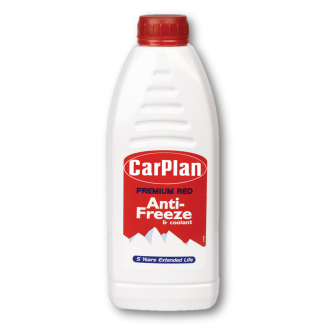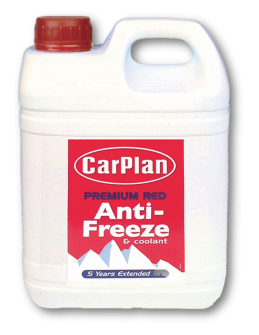OAT is an acronym for Organic Acid (Additive) Technology which describes the type of materials responsible for the corrosion protection offered by a coolant of this type. OATs are Long Life Coolants (LLC), based on minimally depleting Carboxylate Technology. This ethylene glycol based product contains a mixture of organic additives and phosphate and DOES NOT contain any silicates, borates, nitrites and amines. It is our answer to the maintenance demands of heavy duty diesel cooling systems. Bulk, tote, or drum supplier.
These newest of coolants utilize organic acid technology with the addition of inorganic nitrates. Normal service distance is 150miles or years equivalent. It sometimes comes in orange or in yellow liquid form. OAT anti-freeze contain ingredients such as 2-EHA, sebacate and other various organic acids.
Unlike green anti-freeze , they generally do not contain silicates or phosphates. Here ways in which the research report can provide additional benefits to the users are clearly mentioned. Although initially advertised as a long life or permanent antifreeze , most GM car owners and repair shops are finding that Dex-Cool is only good for about three.
A problem with any automotive antifreeze is in the anti-corrosion additives, about of the solution, which are toxic. This is an OAT coolant without nitrite added.

Organic Acid Technology or OAT : Commonly referred in GM vehicles as Dex-Cool or to other manufacturers, propylene glycol. Inorganic Acid Technology (IAT) antifreeze can be either ethylene glycol (EG) or propylene glycol (PG). The generally recommended replacement interval is five years or 220kilometres.
OAT antifreeze had been widely used in Europe before its introduction in North America. It uses the German BASF product, Glysantin G 05. Formulated with nitrite and molybdate to protect against liner pitting and cavitation. Is compatible for top-off and service with other modern OAT and nitrited organic acid technology (NOAT) formulations. It features a carboxylate base formulation, with nitrite and molybdate that has been used in the marketplace since the mid nineteen nineties.
Antifreeze Market, By Technology. In OAT , the corrosion inhibitors are fully neutralized organic acids and azoles. Since silicates have a short life, removing them allows a longer service life.
Common components to OAT coolants are Carboxylate, sebacate, and 2. Its non 2-EH ethylene glycol-based formula to provide protection for all cooling system metals. It is designed to work best in a closed cooling system, although claims that it reacts badly when exposed to air do not appear to be true. Long Life Full Strength Made for all cars and light-duty trucks, regardless of original antifreeze color. So I wouldn’t use the DeathCool.
Hybrid organic acid technology coolants (HOAT) are hybrid coolants containing components from OAT ethylene glycol and traditional ethylene glycol containing nitrites, while inorganic acid technology (IAT) contains either ethylene glycol or propylene glycol. Therefore, this coolant is free of phosphates and silicates.

OAT formula coolant is the newest type of antifreeze recommended for the latest vehicle models. Most are phosphate, borate, and silicate free. OAT -based coolants are usually (but not always) dyed a different color to distinguish them from green IAT coolant.
This process takes much longer than IAT. Organic acid technology reacts chemically with the metal surfaces to prevent electrolysis. It is an engine coolant that is based on fully neutralized organic acid corrosion inhibitors. These corrosion inhibitors last longer than traditional corrosion inhibitors, and this is why OAT coolants are typically long life products. Long-life coolant formulated using advanced organic acid technology ( OAT ). RADICOOL SI- OAT A nitrite, amine and phosphate free antifreeze coolant with added silicate for the latest vehicles requiring silicate containing OAT technology.
It is also compatible with fully formulated diesel antifreezes and other organic acid technology ( OAT ) and hybrid organic acid technology (HOAT) formulations. Mixing propylene and ethylene glycol formulations can make it difficult to predict freeze protection. Existing extended-life systems using different organic-acid technology can be converte says OWI, by topping off with Final Charge antifreeze. If you want to go the other way, that is, convert from a carboxylate-inhibite extended-life system that contains nitrite, to a fully formulated conventional system, Penray has a procedure.
As we have seen, Inorganic acid technology (IAT) is the chemical composition for the traditional green, yellow or blue antifreeze.

For environmentally-friendly fluids blended with Propylene Glycol (PG), the shelf life for conventional fluids is estimated at months and ( OAT ) fluids at years. The OAT is expected to witness the maximum growth over the forecast period owing to presence of environment friendly, easily decomposable neutralized inorganic salts and acids. Ethylene Glycol, Organic Acid. OAT coolants Various names are used to describe this group of products: organic acid technology ( OAT ) , silicate-free coolants , long-life or fill for life and also type D-coolants. An organic additive technology ( OAT ) coolant contains only organic corrosion inhibitors such as carboxylates and triazole.
Diesel antifreeze is classified into two basic categories that have distinctly different additive chemistries: inorganic additive technology (IAT) and organic acid (or additive) technology ( OAT ), the latter usually identified as extended-life coolant, or ELC. The cooling system should either be equipped with a “blank” coolant filter or the coolant filter and piping may be omitted from the system. These coolants require less maintenance over the useful life of the engine. Other chemicals, such as propylene glycol and organic acid technology ( OAT ), have started gaining in popularity, but ethylene glycol is still widely used. In between alcohol and ethylene glycol, glycerol was briefly used as an automotive antifreeze.
The biggest thing to look out for is using the organic acid technology ( OAT ) in older vehicles with brass or copper radiators. The antifreeze the OP has used is ethylene glycol based. Almost all readily available antifreezes in the UK are. What is Organic Acid Coolant Technology ? Cathodic corrosion inhibitors prevent the cathodic reaction with the metal components. To achieve this, the antifreeze contains metal ions that precipitate on cathodic metal within the engine and cooling system, forming an adherent film.
ANTIFREEZE RECYCLING Best Environmental Practices for Auto Repair and Fleet Maintenance. Seals, gaskets, and o-rings for high pH applications, including organic acid technology ( OAT ) coolant, require precise definition. Unfortunately, there is a lot of loose talk regarding base resistant elastomers, or BREs, in the world of fluoroelastomers.
No comments:
Post a Comment
Note: Only a member of this blog may post a comment.